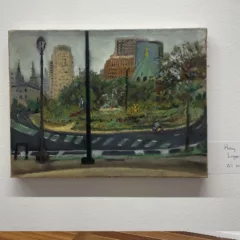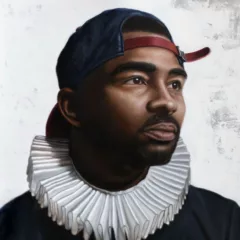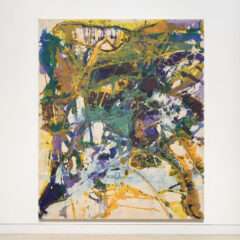Closing December 15, Eleanor Conover’s exhibition of recent paintings, Side Angle Tide, at Swarthmore’s List Gallery is rich with material exploration, splotches of color, and structures that feel simultaneously geometric and organic.
When first entering the gallery I was struck by the medium size of the works, a scale that is not inherently intimate or expansive and yet Conover expertly captures a bit of both. The shield and window-like shaped canvases scale is the reach of my arms, emphasizing the artist’s physical process and presence. The construction and eventual orientation of these forms appears to be discovered through the process of assembly. Many forms are similar, but not exact, which draws our attention to their differences and details. There is a feeling of cohesion between the pencil notations on the stretcher bars that organize the construction of the form, and the drawing and painting on the linen. Seeing both layers in the gauzy pieces shows that the same hand and body is constructing, painting and drawing–developing a totality of vision.
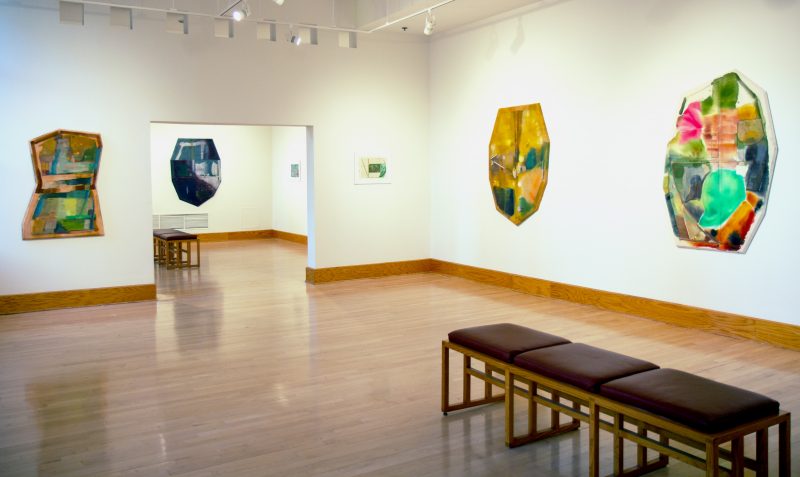
These pieces have a great material sensitivity to them, belied only by the shiny metal plates that cause me to disengage from the work when I see them. They are at odds with details like the beveled edges of the stretcher bars which subtly distinguish and dissolve the painting’s sense of depth giving it a seamless visibility at any angle. I do not experience this element as accentuating dynamism–as mentioned in the press release–instead I read it as a softness that slows my desire to find naturalistic or atmospheric depth, and creates a visual levity despite and in support of their objectness.
This body of work equally celebrates and disrupts conventions in the history of painting. The painting, “Quarry,” finds order through its structure, a shield shape, or is it now a rock shape? The rectangle and grid may not be present, although the top edge remains parallel to the architecture, the structure still provides opportunities for the content to reference the frame. Pencil lines trace the wooden structure that is beneath the fabric, and draw wiggly geometric forms that rest on another horizontal line that starts to look and act like a shelf.
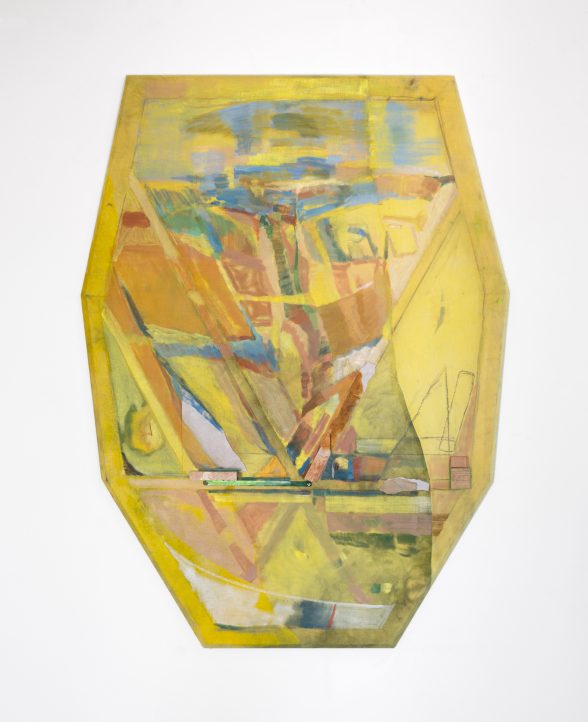
The dark pencil line on the stained acidic yellow linen stands out because of its graphic quality and the tension created by the overlapping shapes. After looking around on the surface of the painting, we notice slightly more saturated areas of color, which are found materials collaged on the surface, some of which have been painted over as a kind of camouflage. As the painting’s title implies, this piece is excavated as much as it is constructed. Looking between the collaged shapes and the pencil shapes, we realize these objects have been traced, removed, and then adhered to the surface. The implications of the moved objects and their positions on this edge/ledge evoke the passing of time, painterly process, and the long history of still life painting, a genre that often uses the table top and interior architecture to create and destroy illusions of depicted space.
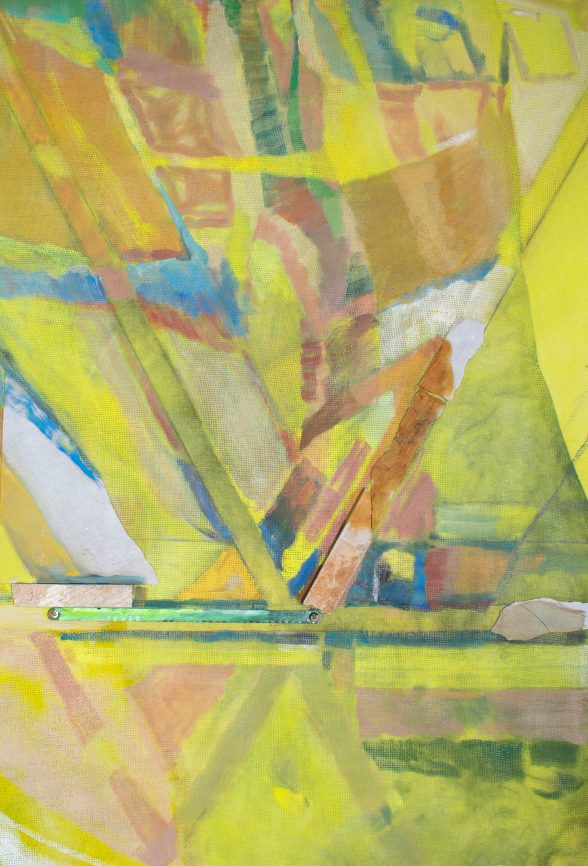
Once you try to affix a clear subject to the painting, or solidify an image or scene, the slipperiness of the abstraction returns, and you find yourself wandering through the variations of touch, material, and color. Here we are rewarded for looking slowly to consider the very process of painting by recognizing ghostly marks of the painting’s history and processes that have left evidence and lead the way to a final image that still feels in motion.


